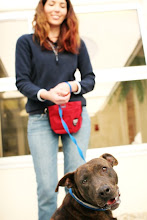
Thursday, February 25, 2010
A Loss To Our Community

Tuesday, February 23, 2010
Best in Show
 Recently I was asked to speak about Dog Shows, Pure Bred dogs and...adoption....? I know, they don't seem to go together, at least not at first.
Recently I was asked to speak about Dog Shows, Pure Bred dogs and...adoption....? I know, they don't seem to go together, at least not at first.Thursday, February 18, 2010
Stairway to Fear
 Many dogs are frightened of stairs, and the reasons vary with each situation.
Many dogs are frightened of stairs, and the reasons vary with each situation.Tuesday, February 16, 2010
Kitten Class 3
Let's start with the "milk myth". Did you know that the ONLY milk your kitten needs is it's mothers? Kittens do NOT need cows milk any more than we do....and no, we don't need it!
Beating Boredom: Plant an indoor garden for your kitten. Try wheat grass in small planters. Get a couple of cat tress and don't throw away those paper bags and cardboard boxes! They may great kitten forts! Change up your kittens play things regularly to keep them stimulated.
You can make cat toys out of pipe cleaners as well. They cost about 3 cents to make. I like to make little bugs, but feel free to get creative!
Remember to confine your kitten at night to where ever you are. Cats are nocturnal by nature and a small kitten can get almost anywhere!
Scratching is a natural and normal cat behavior and should be encouraged, in the right places. Buy a scratching post and show your kitten how to use it. Scratching allows your kitten to scratch and also leave their scent behind.
Kitty Signals: Quivering tail: "I love you!" Swishing or Wagging tail: "I'm annoyed." Ears Up: Curious, alert. Ears Back: "I'm not happy about something..." Low Purr: "I'm very happy! That feels good!" Low Growl: "Back off!" Hissing: "I warned you! Now I'm really MAD!" Meow: reserved especially for humans.
Litter Box Training: Finding the right location is important. Put kittens litter box in a place that provides privacy but does not totally isolate. Keep the box clean. Litter should be scooped every day and the box cleaned with soap and water weekly. Make sure to have as many litter boxes as you do cats and place a box on each level of your home. To train your kitten to use the box, place them inside when they most need to go. (Wake up, after play, after eating, after nap, before bed...)
Be prepared, your kitten will have accidents. It's ok. If you catch your kitten in the act of a mistake, interrupt them with a loud noise and then place them in the litter box. You CANNOT correct them after the fact.
Clean the area with a non ammonia based product. Enzyme eaters work great.
A note about de-clawing. It is cruel and inhumane. There are several countries where the procedure is outlawed. De-clawing removes more than just the nail, it removes the first bone of every 'finger'. Ouch. De-clawing can cause severe behavior problems and is unnecessary. Simply clip your cats nails regularly. Push out the claws by squeezing the paw and snip up to the pink. Do NOT clip the pink part, as this is a vain and will be painful. You can also put "pedi-paws" on your cat. Pedi-paws are basically a rubber nail cover. They come in all different colors!
 Crate Training: Crate training your kitten is very important as it will make vet visits much easier for the both of you! Crate training cuts down on the stress of your cat. Start early with your kitten and go slow. Never force your kitten into the crate. They should always walk in willingly for a treat or their dinner.Proper crate carrying should be done AWAY from your body, and with the opening of the crate facing backwards. This minimizes kitty's stress immensely, plus it's a GREAT arm work out!
Crate Training: Crate training your kitten is very important as it will make vet visits much easier for the both of you! Crate training cuts down on the stress of your cat. Start early with your kitten and go slow. Never force your kitten into the crate. They should always walk in willingly for a treat or their dinner.Proper crate carrying should be done AWAY from your body, and with the opening of the crate facing backwards. This minimizes kitty's stress immensely, plus it's a GREAT arm work out!
Problem behaviors to look out for include: Counter surfing, suckling, fights/aggression, night crazies, spraying and scratching. Counter surfing is not only annoying but can be dangerous to your kitten. (Think hot burner!) To prevent kitty from doing this, simply make your counter an un-attractive place to be. Try placing a plastic carpet runner upside down on your counter. You cat will not like the way this feels on their feet, there fore they will be less likely to jump up there in the future. Suckling is generally caused by a cat being taken from his mother too early. Most cats that display this behavior, do so their entire lives. Spraying can be controlled by spaying and/or neutering your cat.
To figure out what is causing your kittens 'bad' behavior you have to ask yourself a series of questions: Have you changed anything? Taken anything away? Added anything? Met a new person? The smallest thing can set off your cat. (Finally threw out that bean bag chair from 1993? Tried a new perfume?) Find the answer and fix the problem.
Aversives: An aversive is something your cat does not like. There are texture aversives (like the upside down carpet runner), smell/taste aversives such as citrus, surprise (a stacked pyramid of empty soda cans that falls over when your cat jumps on your bed) and human controlled such as a squirt gun. Be careful with human controlled aversives and they can back fire and make your cat fearful of you, instead of the action.
Managing rough play. Hands are NOT play toys and kitten should learn right away that it is NOT ok to bite them. If your kitten bites your hands, end the play session immediately. Always follow by redirecting them to an appropriate action, like chewing on a toy.
The importance of play: Play manages kittens stress and reduces ankle biting and scratching.
Prey Play: This should be done just before bedtime. Simulate a hunt with your kitten with a mouse toy on a string (or similar toy). Let kitty hunt the toy and 'kill it'. Follow with a high protein meaty treat. This will send signals to your kittens brain that it is time for sleep.
Always use positive reinforcement! Encourage the behaviors you want to see and ignore the ones you don't.
Hard work, responsibility and commitment = a life time of love.....
Friday, February 12, 2010
Kitten Class 2
 Thanks for coming back! Now, let's talk about introducing your kitten to your dog. Feed them both their dinner on opposite sides of a closed door. This way they can smell each other during a very important time of the day. Swap scents! Just like you did with your resident cats, swap your dogs bedding with your kittens. During the initial introductions, have your dog on a leash on one end of the room and your kitten being held on the other. Feed them both yummy treats such as chicken, beef hot dogs or tuna. Keep the sessions short and sweet. When it's time, let kitty go first, and ALWAYS supervise their interactions.
Thanks for coming back! Now, let's talk about introducing your kitten to your dog. Feed them both their dinner on opposite sides of a closed door. This way they can smell each other during a very important time of the day. Swap scents! Just like you did with your resident cats, swap your dogs bedding with your kittens. During the initial introductions, have your dog on a leash on one end of the room and your kitten being held on the other. Feed them both yummy treats such as chicken, beef hot dogs or tuna. Keep the sessions short and sweet. When it's time, let kitty go first, and ALWAYS supervise their interactions.Tuesday, February 9, 2010
The Dog Diva on.....Kittens!
 I know what you're thinking...this is a dog blog, and yes it is, but I wanted to take a moment to write a little something about that often neglected 'other pet'. Sure kittens are cute, and soon shelters across the country will be flooded with them as 'kitten season' starts. Yes, Kitten Season.
I know what you're thinking...this is a dog blog, and yes it is, but I wanted to take a moment to write a little something about that often neglected 'other pet'. Sure kittens are cute, and soon shelters across the country will be flooded with them as 'kitten season' starts. Yes, Kitten Season.Friday, February 5, 2010
Puppy Class 3

Monday, February 1, 2010
Puppy Class 2
 Socialization is the MOST important thing you can do for your puppy! I cannot stress this enough. You will need to expose your puppy to many different people and places, remembering to keep all activities positive and never to force your puppy.
Socialization is the MOST important thing you can do for your puppy! I cannot stress this enough. You will need to expose your puppy to many different people and places, remembering to keep all activities positive and never to force your puppy.



